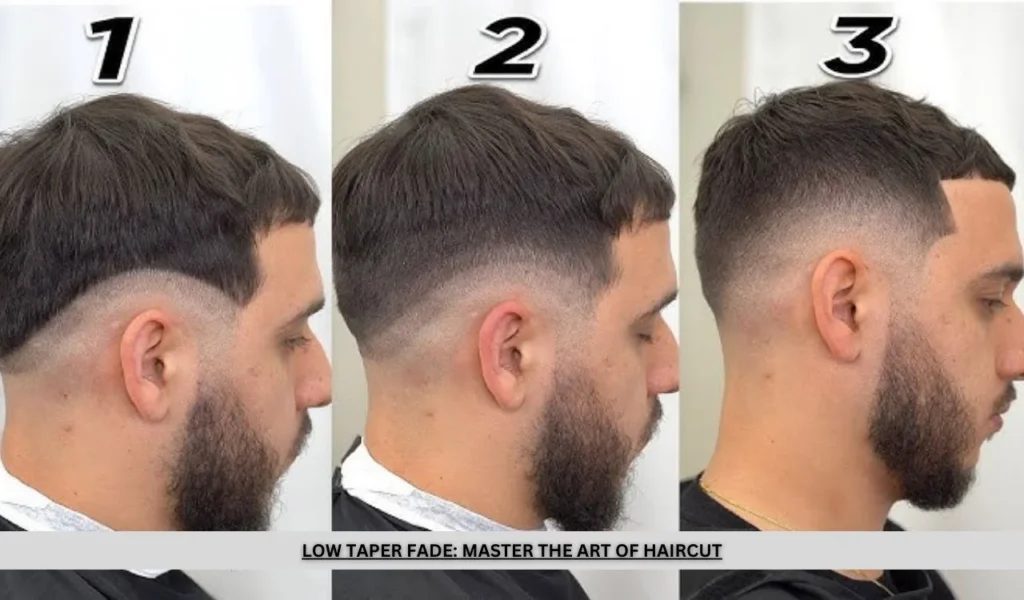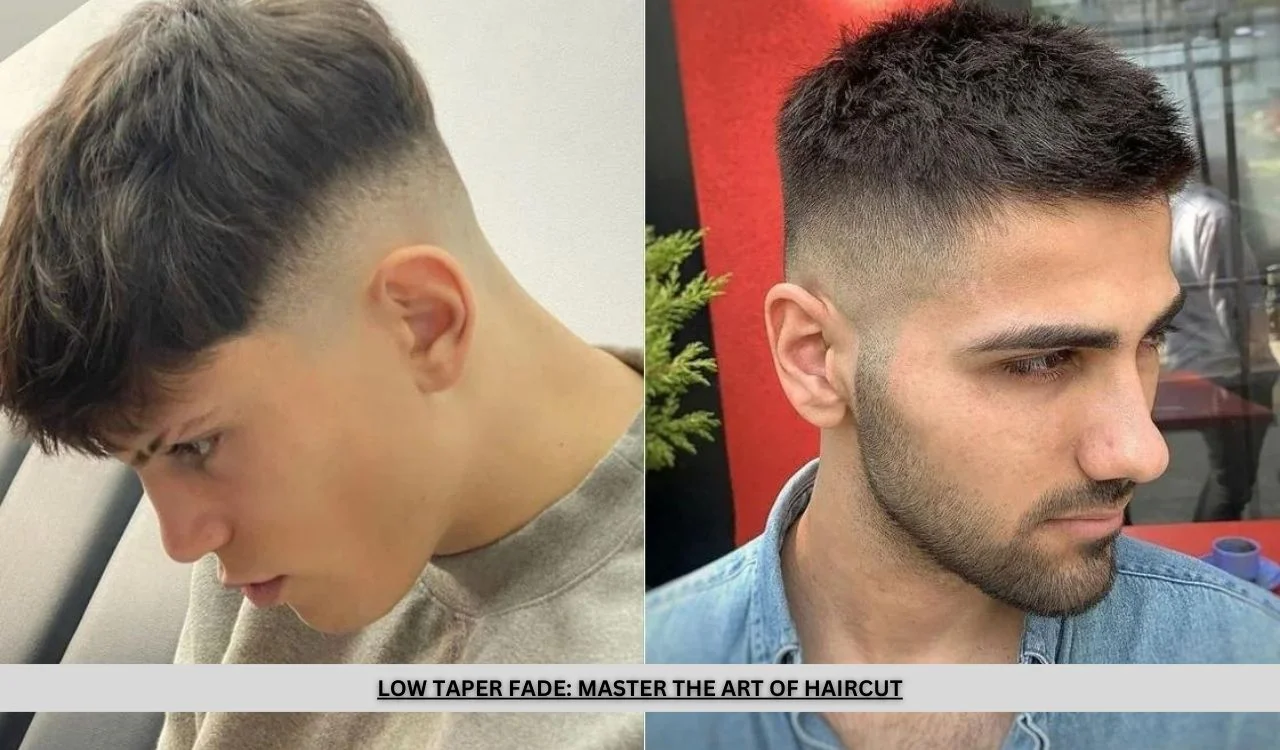When it comes to men’s haircuts, the low taper fade has become a standout style due to its clean, versatile look that suits almost everyone. Whether you’re going for something sleek and professional or a more casual vibe, this hairstyle can be adapted to fit your needs. But how exactly do you explain this cut to your barber, and what are the different fade styles available? Let’s dive into all things related to the low taper fade, from understanding the cut to discussing the different variations and styles.
What is a Low Taper Fade?
The low taper fade is a haircut that blends the hair gradually as it moves from the top down toward the nape of the neck. The fade begins at a low point on the head, usually just above the ears, and transitions smoothly into shorter hair, which is then tapered down to the base of the neck. The subtlety of the low taper fade is what makes it stand out—it’s clean, sharp, and less drastic than other types of fades. This style is ideal for those who want a professional, yet stylish look that can be easily adapted for both formal and casual settings.
Asking Your Barber for a Low Taper Fade
When it comes to getting the perfect low taper fade, clear communication with your barber is key. Here’s how you can describe it:
- Specify the Starting Point: Mention that you want the fade to start at a low point, typically around the ears, and gradually taper down.
- Describe the Gradient: Indicate whether you prefer a soft, subtle gradient or a more noticeable transition.
- Bring Photos: Visual references can help ensure that your barber understands exactly what you’re aiming for.
By being specific about these details, you’ll help your barber deliver the exact look you’re after.
What Are the Different Styles of Fades?
There are several fade styles, each offering a unique look:
- Low Fade: Begins near the ear line and gradually tapers off, offering a subtle transition.
- Mid Fade: Starts higher up on the head, providing a more pronounced fade.
- High Fade: Begins near the temples or even higher, creating a dramatic contrast between the top and sides.
- Skin Fade: Fades down to the skin, offering a clean, almost bald look at the base.
- Drop Fade: The fade line curves downward behind the ears, adding a unique contour that follows the natural shape of the head.
Each of these fade styles can be customized to suit your preferences, hair type, and face shape.
Read Also: Sukuna: Unveiling The Legendary King of Curses and His Unstoppable Power

What is a Low Fade Haircut Called?
A low fade is usually referred to simply as a “low fade.” However, you might hear variations like “low skin fade” if the fade blends into the skin or “low taper fade” if the fade gradually reduces in length without going down to the skin. These terms highlight the nuances in how the fade is executed, allowing for further customization of the haircut.
What Do I Tell My Barber for a Low Fade?
To get the low fade you want, here’s what to tell your barber:
- Fade Starting Point: Ask for the fade to start around the ear level.
- Fade Gradient: Specify if you want a subtle or sharp contrast.
- Additional Details: Mention if you want a skin fade, taper, or any specific styling on top, such as a part or textured finish.
Being clear about these aspects will help your barber give you the exact style you’re looking for.
What Looks Better: High Fade or Low Fade?
The choice between a high fade and a low fade depends on your style and facial structure:
- High Fade: Offers a bold, edgy appearance. It’s ideal for those who want a sharp, noticeable haircut.
- Low Fade: Provides a more subtle, versatile look that works well for most face shapes and is suitable for both casual and formal settings.
If you’re unsure, the low fade is often a safer choice as it complements a wide range of styles and looks.
What’s Better: Low Fade or Taper Fade?
Both styles have their own appeal:
- Low Fade: Creates a uniform look by blending the hair down close to the scalp.
- Taper Fade: Keeps some length at the neckline, providing a softer, more classic vibe.
If you prefer a sleek and clean finish, go for the low fade. If you like retaining some length while still achieving a sharp look, the taper fade is an excellent choice.
What is a Taper vs. Fade?
The terms “taper” and “fade” are often used interchangeably, but they have distinct differences:
- Taper: Involves gradually shortening the hair from the top down to the sides and back, but it keeps some length near the edges.
- Fade: Blends the hair seamlessly into the skin, usually tapering all the way down until no hair is left.
A taper is softer and retains more hair at the neckline, while a fade offers a more dramatic, close-cut finish.
Read Also: Factor Meals: The Future of Healthy Eating

Who Suits a Low Fade?
The low fade is a universally flattering haircut that suits most men, regardless of hair type or face shape. It works particularly well for those with round, square, or oval faces, as it helps to balance facial proportions. Additionally, the low fade is versatile enough to complement different hair textures—whether your hair is straight, wavy, or curly.
What Level Fade Should I Get?
The level of fade you choose should align with your style and hair type:
- Low Fade: Ideal for those seeking a subtle, low-maintenance style.
- Mid Fade: Offers a middle ground with a more noticeable transition.
- High Fade: Best for those who want a bold, high-contrast look.
Consider your hair texture as well—fine hair may benefit from a higher fade for added texture, while thick or curly hair might look best with the clean lines of a low fade.
What is a Drop Fade?
A drop fade is a variation where the fade line dips or “drops” as it moves behind the ears. This creates a curved appearance that follows the natural shape of the head, offering a modern twist on the traditional fade. The drop fade is a great option if you want something slightly different yet still refined.
Is a Taper Just a Low Fade?
No, a taper is not the same as a low fade:
- Taper: Gradually shortens the hair but leaves some length at the edges, resulting in a softer finish.
- Low Fade: Fades the hair close to the scalp, blending it down to a very short length, often close to the skin.
Both styles are subtle, but a low fade offers a sharper, more defined look.
What is a Low Number 1 Fade?
A low number 1 fade refers to a fade where the shortest length of hair is cut with a number 1 clipper guard, which leaves the hair at about 1/8 of an inch. This style is very short but doesn’t go down to the skin, offering a clean yet slightly softer finish compared to a skin fade.
FAQs
1. How often should I get a low taper fade?
It’s recommended to get a trim every 2-3 weeks to keep the fade looking sharp and clean.
2. Can I pair a low taper fade with a beard?
Yes! A low taper fade pairs beautifully with a beard, creating a smooth transition from hair to facial hair.
3. Is the low taper fade suitable for curly hair?
Absolutely. The low taper fade works well with all hair types, including curly hair, adding structure while maintaining volume.
4. Will a low taper fade work with a longer hairstyle?
Yes, it can be combined with longer hair on top, providing a neat and modern contrast between lengths.
5. Can I style my low taper fade differently each day?
Yes! The low taper fade offers flexibility, allowing you to style the longer top section in various ways—from slicked back to messy and textured.
Read Also: https://nimzio.com/erp-ecommerce-blog-kristenly-com/

Conclusion
The low taper fade is a versatile and timeless haircut that continues to be a favorite among men due to its clean, stylish appearance. Whether you’re going for a subtle look or something with a bit more edge, the low taper fade offers plenty of options to suit different tastes and preferences. From communicating with your barber to deciding on the level of fade that works best for you, understanding the ins and outs of this style will help you achieve the perfect haircut every time.
